4 Bodyweight Exercises That Reverse Aging Signs in 30 Days
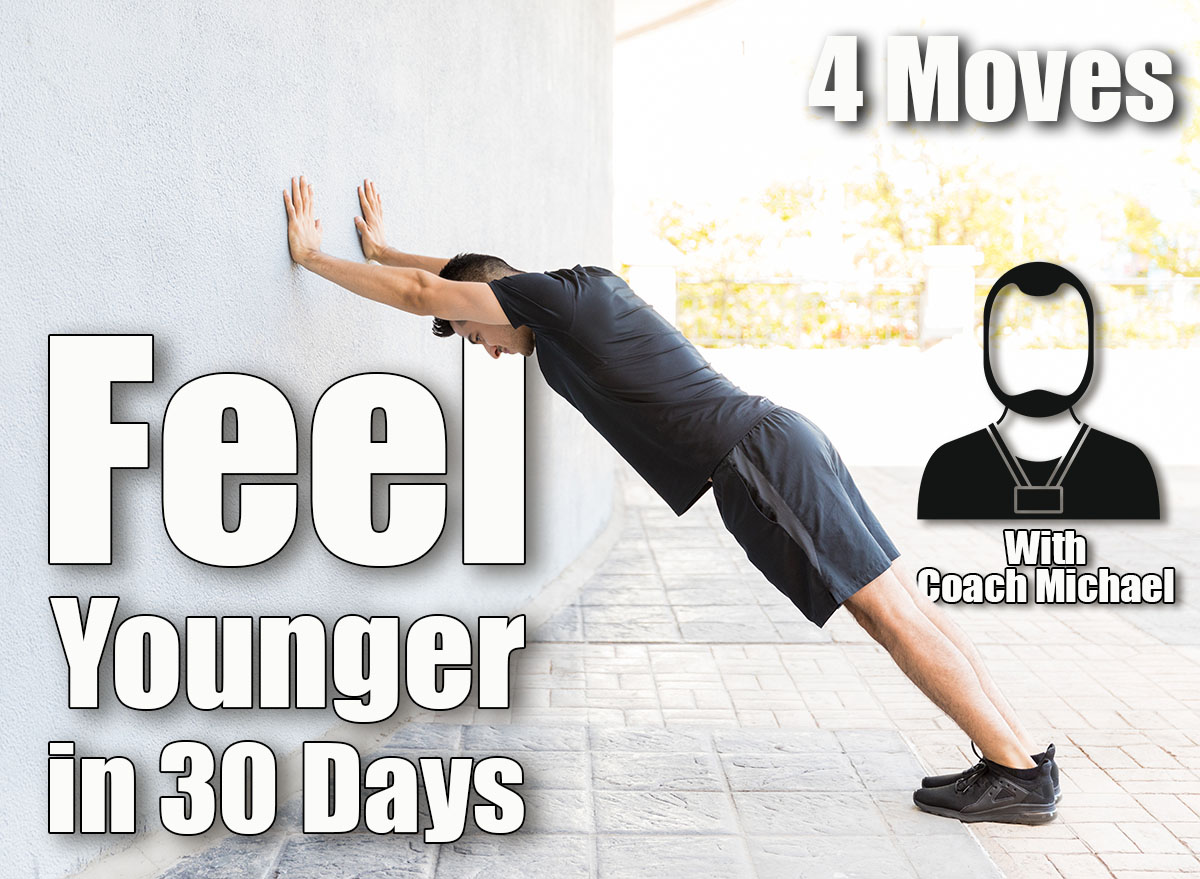
You’ve noticed the changes—getting up from a low couch takes more effort, you grab the handrail on stairs more often, and that explosive quickness you once had seems to have vanished. Over my years of training thousands of clients and educating personal trainers, I’ve seen the same challenges appear in nearly everyone as they get into their 40s and older. The positive is that there are some simple movements that can reverse these signs of aging. These are movements that almost anyone at any level of fitness can do, and once mastered and performed regularly, they can start to show results in as little as a month. Read on to discover the four bodyweight exercises that can help you move, feel, and function like you did years ago.
The Aging Challenges You’re Facing After 40
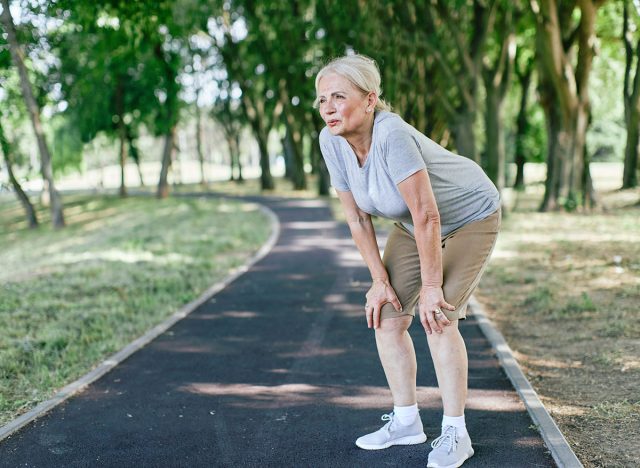
The main one is people losing power before they lose strength. They still have the ability to lift a heavy box, but they can’t do it quickly anymore—explosiveness disappears first, and that’s what makes day-to-day movements feel more challenging. Getting up off the floor, catching yourself when you stumble, pushing up out of a deep sofa—all of these seemingly basic functions need power, not just strength.
Our balance starts to deteriorate quicker than most of us realise, too. Our proprioception (the body’s awareness of where it sits in space) starts to get fizzy. You’ll most likely notice it when you hesitate before you step off a curb or you find yourself grabbing the banister on the stairs more often.
Our muscle mass drops by 3-5% a decade after we hit 40, unless we actively work against it. These losses compound over time—if we lose 5% in our 40s and the same in our 50s, suddenly we’re 10% weaker at 60 than we were at 40. If you let it, the decline just accelerates.
Why Bodyweight Exercises Work Best for You
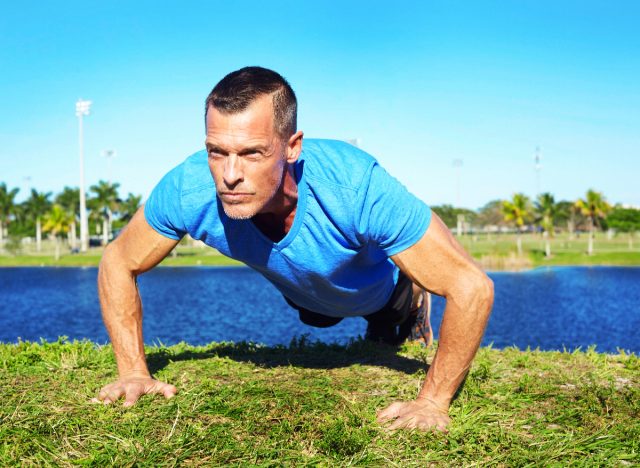
Bodyweight training forces you to move your entire body as one unit instead of isolating muscles on machines. Real life doesn’t happen in isolated movements. You don’t lie on your back and push weight away from your chest in daily life—you push yourself up from the ground using your chest, shoulders, core, and legs together.
They build functional strength that transfers directly to everything you do outside the gym. The squat pattern helps you get in and out of cars. Push-ups prepare you for pushing yourself up from low surfaces. Lunges train the single-leg stability you need for walking and climbing stairs.
Balance improves automatically because you’re controlling your own body in space without external support. Every rep challenges those three balance systems—your inner ear, vision and proprioception. You can’t rely on a machine to stabilise you, so your body has to figure it out.
The injury risk stays much lower than weighted training when you’re relearning movement patterns. If you haven’t trained in years, jumping straight into heavy weights is asking for trouble. Bodyweight exercises let you rebuild movement quality and control before adding external load.
4 Bodyweight Exercises That Reverse Aging Signs in 30 Days
Wall Push-Ups
Wall push-ups help rebuild the pushing strength and shoulder stability that can disappear due to excessive sitting and poor posture. They strengthen your chest, shoulders, and triceps while training your core to keep your body aligned. The angle is gentle enough that anyone can do them, but challenging enough to create real adaptation. You’re training the same movement pattern you’d use to push yourself up from the floor, just at an easier angle.
How to do it:
- Stand about two feet from a wall with your feet hip-width apart
- Place your hands on the wall slightly wider than shoulder-width at chest height
- Keep your body in one straight line from head to heels—don’t let your hips sag or stick out
- Bend your elbows and lower your chest to the wall, keeping your elbows at about a 45-degree angle from your body (not flared out to 90 degrees)
- Push back to the start position
- Your whole body should move as one rigid plank
Mistakes to avoid:
The biggest mistake is letting your head jut forward as you push. Your nose should reach the wall first, not your forehead. Another common error is standing too close to the wall, which makes the exercise too easy to create any real strength gain. Don’t rush the movement either—take 2 seconds to lower, 1 second to push back up.
Assisted Squats
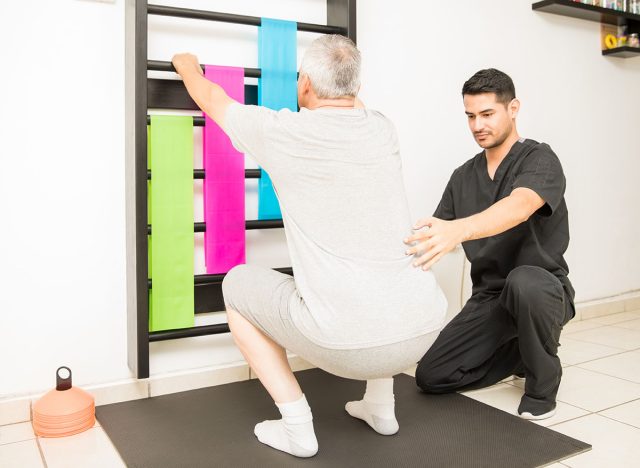
Squats train the exact movement you need to stand up from chairs, get off the toilet, and pick things up from low positions. They build strength in your quads, glutes, and hamstrings while opening up your hips and ankles. The squat pattern also forces your core to work hard, keeping you upright. Most people over 40 have lost significant squat depth—their hips won’t go below their knees anymore. This exercise rebuilds that range.
How to do it:
- Stand facing a sturdy surface you can hold onto—a countertop, back of a chair, or door frame work well
- Hold it lightly with both hands at chest height
- Position your feet shoulder-width apart with your toes pointing slightly outward (about 10-15 degrees)
- Keep your chest up and core tight
- Push your hips back like you’re sitting into a chair, then bend your knees to lower down
- Go as deep as you can while keeping your heels flat and chest upright
- Drive through your whole foot to stand back up, squeezing your glutes at the top
Mistakes to avoid:
Don’t let your knees cave inward as you squat—they should track in line with your toes. Keep your whole foot planted and don’t shift your weight onto your toes. Don’t pull yourself up with your arms either—the hold is just for balance. Your legs should do the work.
Standing Marches
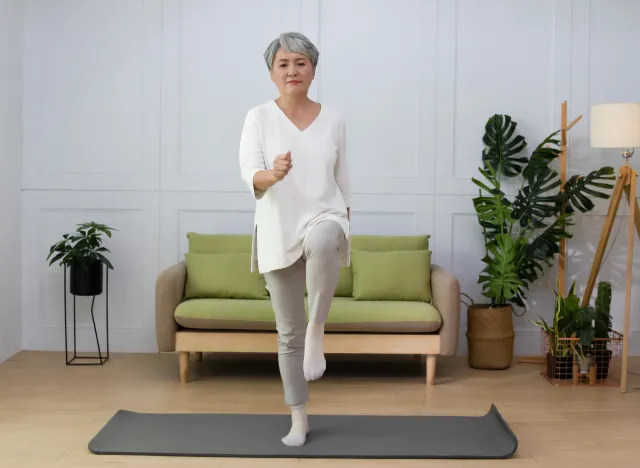
Standing marches train the single-leg stability you need for walking, stairs and avoiding falls. Every step you take in life is a single-leg balance challenge—one foot leaves the ground while the other supports you. Most balance training gets ignored until someone has already fallen. This exercise prevents that decline. It strengthens your hip stabilisers and challenges those three balance systems (inner ear, vision, proprioception) simultaneously.
How to do it:
- Stand next to a wall or sturdy surface you can touch for support if needed
- Stand tall with your feet hip-width apart and core engaged
- Slowly lift one knee up until your thigh is parallel to the floor (or as high as you can manage)
- Hold that position for 2 seconds, then lower with control
- The standing leg should stay locked and strong—don’t let your hip drop on the lifted side
- Switch legs and repeat
- Keep your torso upright throughout—do not lean forward or to the side
Mistakes to avoid:
The most common mistake is rushing through the movement. This is not cardio. Each lift should be deliberate and controlled. Do not lean your torso forward to help lift the knee—that’s cheating and removes the balance challenge. Imagine you’re balancing a cup of water on your standing hip—keep it level.
Standing Calf Raises
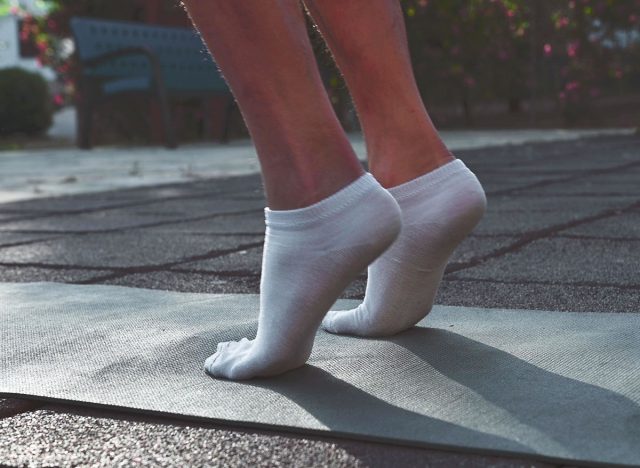
Calf raises rebuild the ankle strength and stability that forms the foundation of good balance. Your ankles are your first line of defence against falls—when you start to tip, your ankle muscles fire first to correct the movement. Weak ankles mean delayed reactions and a higher fall risk. This exercise also helps with foot and ankle mobility, which often becomes restricted from wearing supportive shoes all the time. Strong calves improve your walking gait and make stairs feel easier.
How to do it:
- Stand with your feet hip-width apart near a wall or counter for light support
- Keep your legs straight but not locked
- Rise up onto the balls of your feet as high as you can, pushing through your big toe and the ball of your foot
- Hold at the top for 1 second, then lower back down with control
- Don’t just drop down—the lowering phase builds as much strength as the raising phase
- Keep your body vertical throughout—don’t lean forward or back
Mistakes to avoid:
Most people don’t go high enough at the top. Really push up until you can’t get any higher. Keep your legs straight—don’t bend the knees as you raise up, which takes tension off the calves. If you find yourself using momentum and bouncing through reps, you’re going too fast. Each rep should be controlled and deliberate.
What You Can Expect After 30 Days
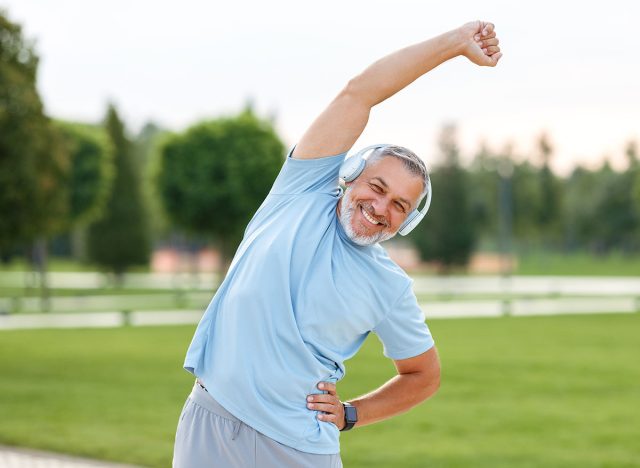
Your balance will improve noticeably within the first two weeks. You’ll stop grabbing handrails as often and feel more confident changing direction quickly. This happens because your nervous system adapts faster than your muscles. Your brain starts remembering these movement patterns and firing the right muscles at the right time.
Joint stiffness, particularly in hips and shoulders, reduces significantly. You’ll notice it most in daily movements—reaching overhead becomes easier, getting in and out of cars feels smoother. This comes from moving your joints through full ranges of motion repeatedly. The old saying motion is lotion is absolutely accurate for joint health.
Your posture shifts without you consciously thinking about it. Strengthening your posterior chain (back, glutes, hamstrings) naturally pulls your shoulders back and lifts your chest. People often comment that you look taller or more confident before you even notice the change yourself.
Energy levels increase during daily activities. Stairs don’t leave you as breathless. Carrying shopping feels lighter. This isn’t dramatic fat loss or huge muscle gain in 30 days—it’s your body becoming more efficient at using the muscle you already have. Your cardiovascular system adapts quickly to regular movement.
You’ll feel more stable getting up from low surfaces and the floor. That hesitation before standing up from a deep sofa disappears. Your legs simply respond faster and stronger. This is one of the most meaningful changes for people over 40 because it directly impacts independence and confidence.
Sleep quality often improves within 2-3 weeks. Physical activity helps regulate your circadian rhythm and reduces the restlessness that keeps people awake. You fall asleep faster and wake up feeling more recovered.
Muscle definition becomes slightly more visible, especially in arms and legs, even without weight loss. You’re recruiting muscle fibres that haven’t been properly activated in years. They start holding better tone throughout the day rather than just during exercise.
What you won’t see in 30 days is a dramatic body composition change. You’re not going to lose 20 pounds or gain obvious muscle mass. These exercises reverse aging by improving function, not by creating Instagram-worthy transformations. The real value is in how you move and feel, not what you see in the mirror. The physical changes come later if you keep going. The functional improvements come immediately.